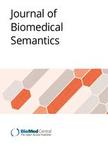版权所有:内蒙古大学图书馆 技术提供:维普资讯• 智图
内蒙古自治区呼和浩特市赛罕区大学西街235号 邮编: 010021

作者机构:Nanjing Univ Chinese Med 138 Xianlin Ave Nanjing 210023 Jiangsu Peoples R China NCBI 8600 Rockville Pike Bethesda MD 20894 USA
出 版 物:《JOURNAL OF BIOMEDICAL SEMANTICS》 (生物医学语义杂志)
年 卷 期:2017年第8卷第1期
页 面:15-15页
核心收录:
学科分类:0710[理学-生物学] 0831[工学-生物医学工程(可授工学、理学、医学学位)] 08[工学] 0836[工学-生物工程]
基 金:NIH Intramural Research Program, National Library of Medicine National Natural Science Foundation of China [81674099, 81603498] Six Talent Peaks Project of Jiangsu Province, China [XYDXXJS-047] Qing Lan Project of Jiangsu Province, China Priority Academic Program Development of Jiangsu Higher Education Institutions (PAPD)
主 题:Text Classification MeSH Term Unify Medical Language System Inductive Logic Programming Target Article
摘 要:Background: MeSH indexing is the task of assigning relevant MeSH terms based on a manual reading of scholarly publications by human indexers. The task is highly important for improving literature retrieval and many other scientific investigations in biomedical research. Unfortunately, given its manual nature, the process of MeSH indexing is both time-consuming (new articles are not immediately indexed until 2 or 3 months later) and costly (approximately ten dollars per article). In response, automatic indexing by computers has been previously proposed and attempted but remains challenging. In order to advance the state of the art in automatic MeSH indexing, a community-wide shared task called BioASQ was recently organized. Methods: We propose MeSH Now, an integrated approach that first uses multiple strategies to generate a combined list of candidate MeSH terms for a target article. Through a novel learning-to-rank framework, MeSH Now then ranks the list of candidate terms based on their relevance to the target article. Finally, MeSH Now selects the highest-ranked MeSH terms via a post-processing module. Results: We assessed MeSH Now on two separate benchmarking datasets using traditional precision, recall and F(1-)score metrics. In both evaluations, MeSH Now consistently achieved over 0.60 in F-score, ranging from 0.610 to 0. 612. Furthermore, additional experiments show that MeSH Now can be optimized by parallel computing in order to process MEDLINE documents on a large scale. Conclusions: We conclude that MeSH Now is a robust approach with state-of-the-art performance for automatic MeSH indexing and that MeSH Now is capable of processing PubMed scale documents within a reasonable time frame.